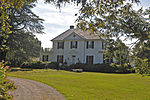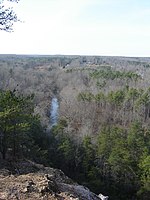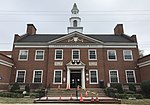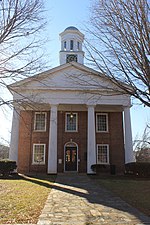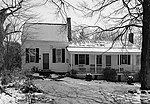Moorefields
Federal architecture in North CarolinaHillsborough, North CarolinaHistoric American Buildings Survey in North CarolinaHouses completed in 1785Houses in Orange County, North Carolina ... and 5 more
Houses on the National Register of Historic Places in North CarolinaNational Register of Historic Places in Orange County, North CarolinaO'Moore familyPlantation houses in North CarolinaResearch Triangle region, North Carolina Registered Historic Place stubs

Moorefields is a historic plantation home located near Hillsborough, Orange County, North Carolina. It was built about 1785, and consists of a two-story central block, three bays wide, with flanking one-bay wings in the Federal style. The house features a shed porch with turned wooden posts. It was built by soldier and judge Alfred Moore (1755-1810).It was listed on the National Register of Historic Places in 1972.
Excerpt from the Wikipedia article Moorefields (License: CC BY-SA 3.0, Authors, Images).Moorefields
Moorefields Road,
Geographical coordinates (GPS) Address Nearby Places Show on map
Geographical coordinates (GPS)
| Latitude | Longitude |
|---|---|
| N 36.051944444444 ° | E -79.145277777778 ° |
Address
Moorefields Road 2369
27278
North Carolina, United States
Open on Google Maps
